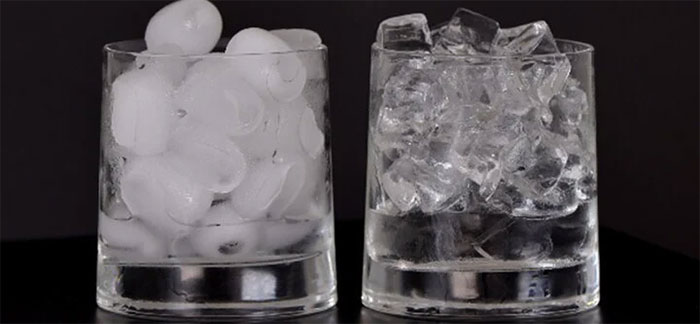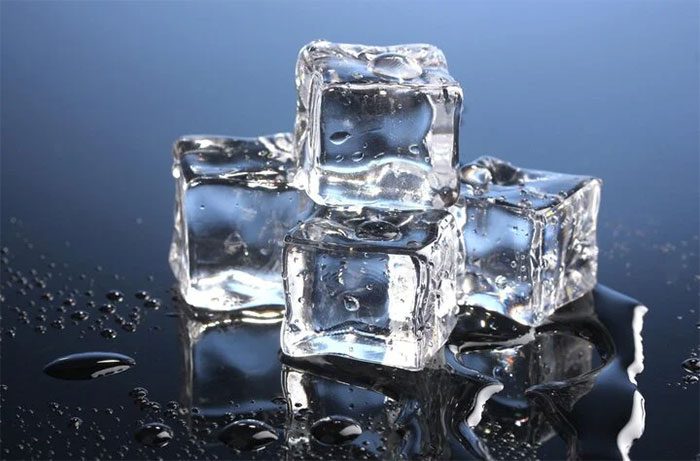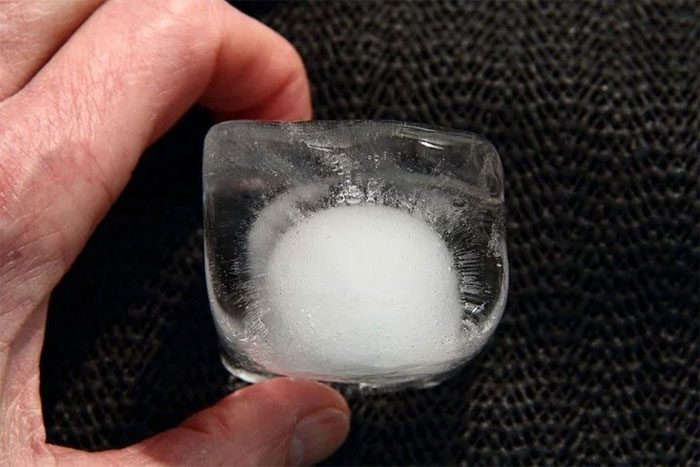Color, clarity, melting time… are key indicators to help you distinguish between ice made from boiled water and unboiled water.
Unlike the type of ice used for chilling food, the ice used in beverages such as smoothies, juices, and beer demands high quality, especially in terms of microbiology. For safety reasons, many people prefer to use ice made from boiled water; however, not everyone knows how to differentiate between ice made from boiled water and unboiled water.
 Ice made from boiled water is typically clear, while ice made from unboiled water is less clear. (Photo: Memphis Ice Machine Company)
Ice made from boiled water is typically clear, while ice made from unboiled water is less clear. (Photo: Memphis Ice Machine Company)
According to Scienceabc, although there may not be a significant difference in sensory perception, careful observation can help you relatively distinguish between ice made from boiled water and that made from unboiled water through the following indicators:
Color and Clarity of the Ice Cube
Ice made from boiled water will typically have a clear and smooth appearance once frozen. This is due to the boiling process, which removes air bubbles and some impurities. If you use boiled water twice to make ice, the result is crystal-clear ice cubes that are not cloudy.

Ice made from boiled water is clear due to the removal of air bubbles and impurities. (Photo: Facts).
In contrast, ice made from unboiled water often appears cloudy due to the presence of various impurities. Although these impurities are not visible when dissolved in water, they aggregate when frozen, resulting in cloudy ice cubes.
“Impurities” do not always mean germs or bacteria. Anything that is not water present in the water can be considered an impurity. Unboiled water contains many impurities, most of which are not harmful to us. In fact, some of these substances (such as calcium and magnesium) can be beneficial to health. Various impurities also contribute to the distinct taste of water.
The most common impurities found in unboiled water include calcium deposits, fluoride, nitrates, magnesium, and some organic elements that cannot be removed by conventional filtration methods. When water freezes, the impurities that were evenly distributed tend to concentrate near the center, causing the ice cubes to appear cloudy in the middle.

Ice made from unboiled water is often cloudier due to the presence of impurities in the water. (Photo: Wikipedia.org).
Note that ice cubes made from distilled water tend to be clearer because distilled water (or even boiled water) contains fewer impurities than tap water.
Solubility
In addition to observing the color and clarity of the ice cube, we can also distinguish between ice made from boiled water and unboiled water by its solubility. It may sound complex, but it is actually quite simple.
Ice made from boiled water is more solid due to the removal of air bubbles and impurities, which allows it to stay cold longer, leading to a noticeably slower melting rate. Once the ice has melted, you will find the water clear, similar to mineral water.
On the other hand, ice made from unboiled water has a looser structure due to many impurities, causing it to melt faster. After melting, the water will appear cloudy and residues will be visible.
In summary, boiled water produces clear ice cubes, while unboiled water produces cloudier ice cubes. This is the most notable indicator for distinguishing between ice made from boiled and unboiled water.


















































